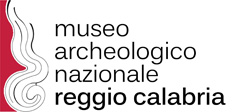Heaven in the Bible
The program of events at the National Archaeological Museum of Reggio Calabria in the week of Christmas Eve is dedicated to the theme of the sacred in ancient times and in the Christian age.
On Wednesday, December 18th, in two morning appointments – at 11.00 am and 12.30 am – the teaching staff of the MArRC will accompany visitors to the discovery of some of the “Great Sanctuaries of Greek Calabria”, through the exhibition itinerary of the permanent collection.
Even in ancient Calabria and in Magna Graecia there were places of worship, often located in far positions from the inhabited center, where they could go to invoke the deities. Among the “stages”, there is also the Sanctuary of Grotta Caruso, known as Grotta delle Ninfe (Grotto of Nymphs), connected to the theme of the sacredness of nature, active since the sixth Century BC.
The guided tour is free, without reservation.
Professor Angela Misiano, scientific director of the Planetarium Pythagoras, as part of a consolidated synergy between the two cultural institutes of Reggio, will hold a Conference on a highly suggestive topic: “Heaven in the Bible”, in the afternoon, at 5.00 pm, in Piazza Paolo Orsi.
The scientist will illustrate the structure of Heaven, that is considered in all cultures as the “seat” of the Divine, is represented in the fundamental text of Christian theology. In her report, the scientist will trace the traces of ancient astronomical knowledge, which mostly refer to the origins of the Mesopotamian and Egyptian world.
“There are many astronomical and cosmological quotes in the Bible: comets, planetary conjunctions, eclipses of the Sun and the Moon, strange and inexplicable phenomena”, Misiano says. “In re-reading them carefully, one realizes that the Bible, although not a scientific manual, uses a very accurate language when scientific subjects are mentioned. It was written for the spiritual construction of believers, not to teach them physics or some other natural science – the scholar continues -. The science of the time is used as a learned covering, to highlight the ultimate meaning of creation and the end of history: everything comes from God and returns to him”.
The Director of the Museum, Carmelo Malacrino, will take part in the greetings.

